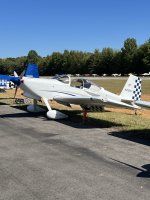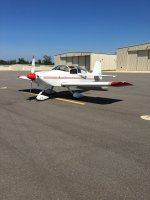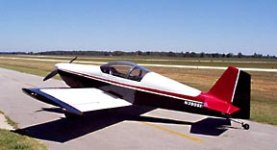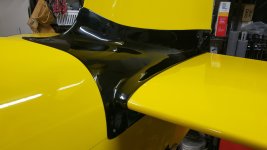gmcjetpilot
Well Known Member
I am doing one solid color. I will paint the plane myself. I was all set on single stage. I am now reconsidering.
With base clear you have move chance to correct mistakes and should have a bit more long lived. Although modern single stage epoxy urethans have anti UV in it. Remember old cars pre clear that got oxidized.
Single stage epoxy urethane is nice. My first RV I had "pro" painted with Jet Glo. It looked greet 20 yrs later when I sold it. I do remember the two trim color strips had an edge you could feel with hand. Not visible unless looking at it close, but could feel it. Base clear you can clear over trim and make it look nicer. I think if I were to go fancy graphics base clear would be better. Since I am not....
If you have good prep, good equipment, technique both will look fine. The single stage takes longer to flash off and may be more subject to get contaminated while wet. I will do my best DIY spray both. Still base coat clear might have an advantage. The down side is more coats (and weight) for base/clear.
With base clear you have move chance to correct mistakes and should have a bit more long lived. Although modern single stage epoxy urethans have anti UV in it. Remember old cars pre clear that got oxidized.
Single stage epoxy urethane is nice. My first RV I had "pro" painted with Jet Glo. It looked greet 20 yrs later when I sold it. I do remember the two trim color strips had an edge you could feel with hand. Not visible unless looking at it close, but could feel it. Base clear you can clear over trim and make it look nicer. I think if I were to go fancy graphics base clear would be better. Since I am not....
If you have good prep, good equipment, technique both will look fine. The single stage takes longer to flash off and may be more subject to get contaminated while wet. I will do my best DIY spray both. Still base coat clear might have an advantage. The down side is more coats (and weight) for base/clear.





